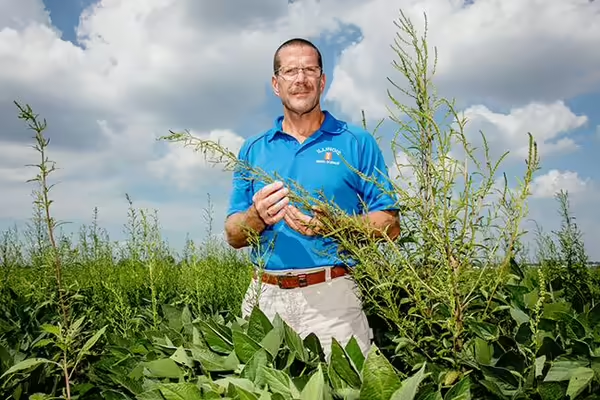
URBANA, Ill. — Eight years ago, University of Illinois and USDA-ARS scientists turned weed control on its head. More and more herbicide resistant weeds were popping up, and the pest plants were getting harder to kill. It was clear farmers could no longer rely on the same chemicals year after year. Industry campaigns and herbicide applicators began touting the benefits of rotating herbicides annually to avoid developing resistance, and rotation quickly became common practice.
But in 2015, a team of weed scientists from U of I and USDA-ARS studied the effects of herbicide rotation and found the practice actually increased resistance to glyphosate in waterhemp, a common and destructive Corn Belt weed. What worked, instead, was mixing multiple herbicides in the same tank and spraying simultaneously. Their large experiment, including 105 grain fields across Illinois, showed tank-mixing was 83 times less likely to lead to glyphosate resistance.
The study had a powerful impact, with recommendations changing nearly overnight; tank-mixing herbicides is now de rigueur. But one of the study’s authors is now urging farmers and industry players to remember tank-mixing only delays the evolution of resistance.
Read the full release from the College of ACES.
Illinois Extension leads public outreach for University of Illinois by translating research into action plans that allow Illinois families, businesses, and community leaders to solve problems, make informed decisions, and adapt to changes and opportunities. Illinois Extension is part of the University of Illinois Urbana-Champaign College of Agricultural, Consumer and Environmental Sciences.